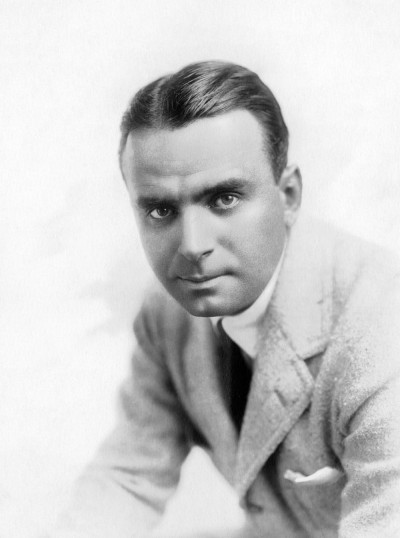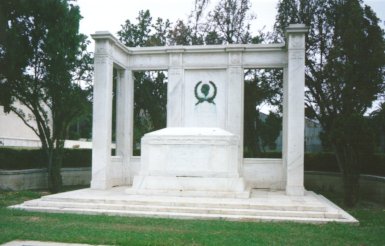Douglas Fairbanks Sr. (Douglas Fairbanks)

Fairbanks was born Douglas Elton Thomas Ullman (spelled “Ulman” by Douglas Fairbanks, Jr. in his memoirs) in Denver, Colorado, the son of H. Charles Ullman (born September 15, 1833) and Ella Adelaide (née Marsh; born 1847). He had a half-brother, John Fairbanks, Jr. (born 1873), and a full brother, Robert Payne Ullman (March 13, 1882 – February 22, 1948). Douglas Fairbanks’s father, Hezekiah Charles Ullman (1833–1915) was born in Berrysburg, Pennsylvania, but raised in Williamsport. He was the fourth child in a relatively well-to-do Jewish family consisting of six sons and four daughters. Charles’s parents, Lazarus Ullman and Lydia Abrahams, had immigrated to the U.S. in 1830 from Baden, Germany. When he was 17, Charles started a small publishing business in Philadelphia. Two years later, he left for New York to study law. He was admitted to the Pennsylvania bar in 1856 and began building a substantial practice. At the onset of the Civil War, Charles joined the Union forces. He engaged in several battles, was wounded, and later became a captain of the 5th Pennsylvania Reserves. Charles left the service in 1864 and returned to his law practice. He subsequently founded the U.S. Law Association, a forerunner of the American Bar Association.
Charles met Ella Adelaide Marsh (1847–1915), after she married his friend and client John Fairbanks, a wealthy New Orleans sugar mill and plantation owner. The Fairbanks’ had a son, John, and shortly thereafter John Senior died of tuberculosis. Ella, born into a wealthy southern Catholic family, was overprotected and knew little of her husband’s business. Consequently, she was swindled out of her fortune by her husband’s partners. Even the efforts of Charles Ullman, acting on her behalf, failed to regain any of the family fortune for her. Distraught and lonely, she met and married a courtly Georgian, Edward Wilcox, who turned out to be an alcoholic. After they had a son, Norris, she divorced Wilcox with Charles acting as her own lawyer in the suit. The pretty southern belle soon became romantically involved with Charles and agreed to move to Denver with him to pursue mining investments. They arrived in Denver in 1881 with her son, John. (Norris was left in Georgia with relatives and was never sent for by his mother.) They were married and in 1882 had a child, Robert and then a second son, Douglas, a year later. Charles purchased several mining interests in the Rocky Mountains and he re-established his law practice. Charles Ullman abandoned the family when Douglas was five years old and he and his older brother Robert were brought up by their mother, who gave them the family name Fairbanks, after her first husband.
Douglas Fairbanks began acting at an early age, in amateur theatre on the Denver stage, performing in summer stock at the Elitch Gardens Theatre, and becoming a sensation in his teens. He attended Denver East High School, and was once expelled for dressing up the campus statues on St. Patrick’s Day. He left during his senior year. He stated that he attended Colorado School of Mines for a term but no record of attendance has been found. An article on the matter recounts a professor once saying that Fairbanks was asked to leave because of a prank not long after he began. It is also claimed he attended Harvard University. Fairbanks moved to New York in the early 1900s to pursue an acting career, joining the acting troupe of British actor Frederick Warde who had discovered Fairbanks performing in Denver. He worked in a hardware store and as a clerk in a Wall Street office before his Broadway debut in 1902. On July 11, 1907, Fairbanks married Anna Beth Sully, the daughter of wealthy industrialist Daniel J. Sully, in Watch Hill, Rhode Island. They had one son, Douglas Elton Fairbanks, who later became known as actor “Douglas Fairbanks Jr.” In 1915, the family moved to Los Angeles.
After moving to Los Angeles, Fairbanks signed a contract with Triangle Pictures in 1915 and began working under the supervision of D.W. Griffith. His first film was titled The Lamb, in which he debuted the athletic abilities that would gain him wide attention among theatre audiences. His athleticism was not appreciated by Griffith, however, and he was brought to the attention of Anita Loos and John Emerson, who wrote and directed many of his early romantic comedies. In 1916, Fairbanks established his own company, the Douglas Fairbanks Film Corporation, and would soon get a job at Paramount.
Fairbanks met actress Mary Pickford at a party in 1916, the couple beginning an affair. In 1917, they joined Fairbanks’s friend Charlie Chaplin[4] selling war bonds by train across the U.S. Pickford and Chaplin were then the two highest paid film stars in Hollywood. To curtail these stars’ astronomical salaries, the large studios attempted to monopolize distributors and exhibitors. By 1918, Fairbanks was Hollywood’s most popular actor, and within three years of his arrival Fairbanks’s popularity and business acumen raised him to the third-highest paid. In 1917 Fairbanks capitalized on his rising popularity by publishing a self-help book, Laugh and Live which extolled the power of positive thinking and self-confidence in raising one’s health, business and social prospects. To avoid being controlled by the studios and to protect their independence, Fairbanks, Pickford, Chaplin, and D. W. Griffith formed United Artists in 1919, which created their own distributorships and gave them complete artistic control over their films and the profits generated. The company was kept solvent in the years immediately after its formation largely by the success of Fairbanks’s films.
In late 1918, Sully was granted a divorce from Fairbanks, the judgment being finalized in early 1919. After the divorce, Fairbanks was determined to have Pickford become his wife, but she was still married to actor Owen Moore. He finally gave her an ultimatum. She then obtained a fast divorce in the small Nevada town of Minden on March 2, 1920. Fairbanks leased the Beverly Hills mansion Grayhall and was rumored to have used it during his courtship of Pickford. The couple married on March 28, 1920. Pickford’s divorce from Moore was contested by Nevada legislators, however, and the dispute was not settled until 1922. Even though the lawmakers objected to the marriage, the public went wild over the idea of “Everybody’s Hero” marrying “America’s Sweetheart.” They were greeted by large crowds in London and Paris during their European honeymoon, becoming Hollywood’s first celebrity couple. During the years they were married, Fairbanks and Pickford were regarded as “Hollywood Royalty,” famous for entertaining at their Beverly Hills estate, Pickfair.
By 1920, Fairbanks had completed twenty-nine films (twenty-eight features and one two-reel short), which showcased his ebullient screen persona and athletic ability. By 1920, he had the inspiration of staging a new type of adventure-costume picture, a genre that was then out of favor with the public; Fairbanks had been a comic in his previous films. In The Mark of Zorro, Fairbanks combined his appealing screen persona with the new adventurous costume element. It was a smash success and parlayed the actor into the rank of superstar. For the remainder of his career in silent films he continued to produce and star in ever more elaborate, impressive costume films, such as The Three Musketeers (1921), Douglas Fairbanks in Robin Hood (1922), The Thief of Bagdad (1924), The Black Pirate (1926, the first full-length Technicolor film), and The Gaucho (1927). Fairbanks spared no expense and effort in these films, which established the standard for all future swashbuckling films.
In 1921, he, Pickford, Chaplin, and others, helped to organize the Motion Picture Fund to assist those in the industry who could not work, or were unable to meet their bills. During the first ceremony of its type, on April 30, 1927, Fairbanks and Pickford placed their hand and foot prints in wet cement at the newly opened Grauman’s Chinese Theatre in Hollywood. Fairbanks was elected first President of the Motion Picture Academy of Arts and Sciences that same year, and he presented the first Academy Awards at the Roosevelt Hotel. Today, Fairbanks also has a star on the Hollywood Walk of Fame at 7020 Hollywood Boulevard.
While Fairbanks had flourished in the silent genre, the restrictions of early sound films dulled his enthusiasm for film-making. His athletic abilities and general health also began to decline at this time, in part due to years of chain-smoking. On March 29, 1929, at Pickford’s bungalow, United Artists brought together Pickford, Fairbanks, Charles Chaplin, Norma Talmadge, Gloria Swanson, John Barrymore, D.W. Griffith and Dolores del Rio to speak on the radio show The Dodge Brothers Hour to prove Fairbanks could meet the challenge of talking movies.
Fairbanks’s last silent film was the lavish The Iron Mask (1929), a sequel to 1921’s The Three Musketeers. The Iron Mask included an introductory prologue spoken by Fairbanks. He and Pickford chose to make their first talkie as a joint venture, playing Petruchio and Kate in Shakespeare’s The Taming of the Shrew (1929). This film, and his subsequent sound films, were poorly received by Depression-era audiences. The last film in which he acted was the British production The Private Life of Don Juan (1934), after which he retired from acting. Fairbanks and Pickford separated in 1933, after he began an affair with Sylvia, Lady Ashley. They divorced in 1936, with Pickford keeping the Pickfair estate. Within months Fairbanks and Ashley were married in Paris. He continued to be marginally involved in the film industry and United Artists, but his later years lacked the intense focus of his film years. His health continued to decline, and in his final years he lived at 705 Ocean Front (now Pacific Coast Highway) in Santa Monica, California, although much of his time was spent traveling abroad with third wife, Sylvia, Lady Ashley.
On December 12, 1939, Fairbanks had a mild heart attack. He died later that day at his home in Santa Monica. Fairbanks’s famous last words were, “I’ve never felt better.” His funeral service was held at the Wee Kirk o’ the Heather Church in Glendale’s Forest Lawn Memorial Park Cemetery where he was placed in a crypt in the Great Mausoleum. Two years following his death, he was removed from Forest Lawn by his widow, who commissioned an elaborate marble monument for him featuring a long rectangular reflecting pool, raised tomb, and classic Greek architecture in Hollywood Forever Cemetery in Los Angeles. The monument was dedicated in a ceremony held in October 1941, with Fairbanks’s close friend Charles Chaplin reading a remembrance. The remains of his son, Douglas Fairbanks, Jr., were also interred there upon his death in 2000.
Born
- May, 23, 1883
- USA
- Denver, Colorado
Died
- December, 12, 1939
- USA
- Santa Monica, California
Cause of Death
- Heart attack
Cemetery
- Hollywood Forever Cemetery
- Los Angeles County, California
- USA





